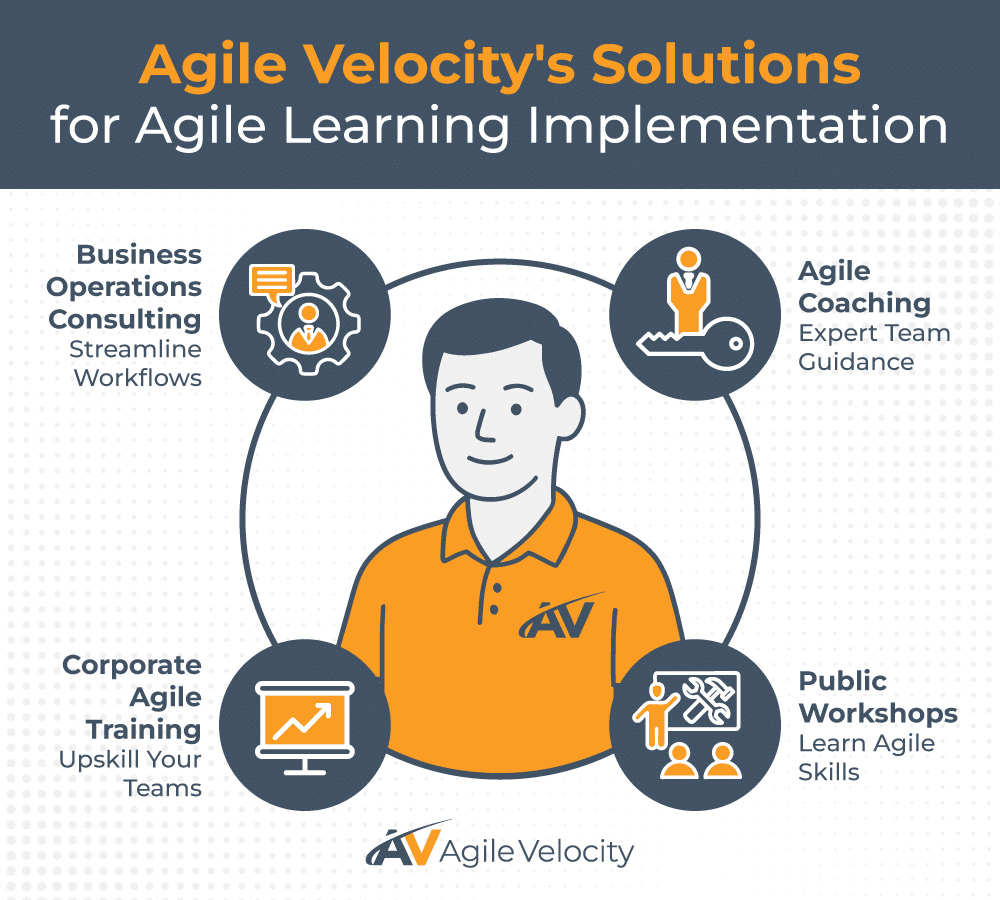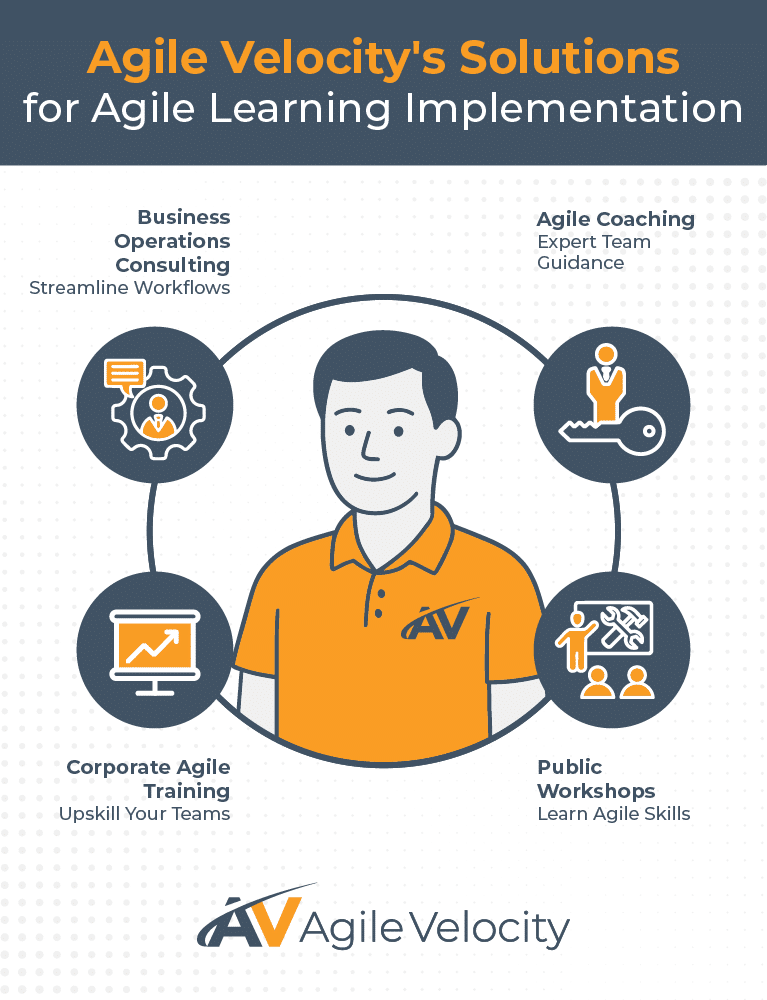The future of employee development relies on adaptability, flexibility, and the ability to keep pace with evolving business needs. Traditional training methods, often rigid and one-size-fits-all, no longer meet today’s demands. Agile learning offers a modern solution through adaptability, continuous feedback, and iterative improvement. Organizations can design training programs that evolve along with their workforce, ensuring employees gain relevant and actionable skills.
In this blog, we explore how Agile learning approaches can revolutionize employee training. You will gain practical strategies to create learning frameworks that engage employees, improve retention, and align with your organization’s goals. We also highlight the impact of tools like Path to Agility® Navigator, which helps you track progress, identify growth areas, and ensure measurable outcomes in team health and morale.
Why is Agile Learning Better than Traditional Methods?
Traditional employee training is often rigid and fails to address changing needs. Adopting Agile practices provides a forward-thinking alternative that blends flexibility, collaboration, and continuous improvement to deliver dynamic training programs.
Factors such as generational diversity, hybrid work models, and rapid technological change demand training that evolves with the business. Agile learning meets this need by creating adaptive learning environments that enhance knowledge retention, engage employees, and align with strategic objectives.
By fostering a cycle of iterative improvement and open feedback, Agile learning transforms training from a static event into an ongoing process that grows with the organization.
Core Principles of Agile Learning
Agile learning is built on four core principles that ensure training remains dynamic and aligned with both employee and organizational needs.
Adaptability in Training
Adaptive training prioritizes flexibility. Training content is continuously updated based on real-time feedback and shifting business priorities. Instead of following a predetermined curriculum, training is adjusted to address current skill gaps and emerging challenges. This helps avoid outdated content and ensures initiatives deliver immediate, lasting impact.
Continuous Feedback Loops
Regular feedback is critical. Instead of waiting until training sessions are complete, Agile learning incorporates ongoing feedback that allows learners to identify and address mistakes immediately. This real-time insight builds self-awareness and promotes a culture where continuous improvement is the norm.
Iterative Learning Strategies
By breaking complex subjects into smaller, manageable segments, Agile learning allows employees to absorb and apply knowledge incrementally. Each learning iteration includes planning, execution, and review, minimizing information overload and promoting steady progression. This approach is similar to Agile iterations within work projects, ensuring each training cycle leads to measurable improvements.
Empowerment and Collaboration
Collaborative learning methods shift training from a top-down model to one where employees take active ownership of their development. Cross-functional learning cohorts foster shared accountability and peer support. As learners gain confidence, they transition to self-directed learning, building the resilience and innovation that modern organizations require.
Key Benefits of Agile Learning Practices

Adopting Agile learning brings several important benefits that contribute to overall organizational success.
Enhancing Employee Engagement
Custom, iterative training programs cater to individual learning styles and job requirements. When training adapts to each employee’s needs, they feel recognized and valued, which increases engagement and motivation. This reframes training as an opportunity for growth rather than a regulatory task.
Improving Retention and Results
Breaking training into manageable, iterative cycles allows employees to see measurable progress. This continuous sense of achievement enhances both knowledge retention and job satisfaction. With strong feedback mechanisms, training stays practical and relevant, which deepens employees’ ties to the organization and reduces turnover.
Aligning Training with Business Objectives
Agile learning naturally integrates with strategic business goals. Regular reviews and adaptive sessions ensure that training initiatives remain pertinent as business priorities evolve. For example, if a company is focusing on AI-driven innovation, training can immediately shift to cover AI fundamentals and data-driven decision-making. This alignment ensures every training dollar contributes directly to business performance.
Fostering a Culture of Continuous Improvement
At its core, Agile learning encourages a mindset of ongoing growth. Each training cycle includes reflection and revision, creating a culture where feedback and innovation are standard. Over time, this nurtures an environment in which continuous improvement becomes ingrained in every aspect of work.
Practical Steps to Implement Agile Learning
Transitioning to Agile learning involves a clear, structured approach. The following steps offer a concise roadmap to successfully integrate Agile principles into your training framework.
Assess Organizational and Employee Needs
Begin by identifying current skills, strategic priorities, and the specific challenges your employees face. This assessment helps pinpoint training needs and ensures resources are focused on classes or modules that offer the most impact. Whether your aim is to support an Agile Transformation or address operational inefficiencies, targeted assessment aligns training with real business outcomes.
Build Cross-Functional Training Teams
Develop training programs through collaboration across different departments. Create cross-functional teams that combine diverse perspectives for better-designed learning initiatives. In these teams, designate facilitators—similar to Scrum Masters—to guide discussions, maintain focus, and ensure accountability. This approach ensures that training is comprehensive and contextually relevant.
Embrace Continuous Feedback and Iteration
Adopt short training cycles that end with feedback and review. A typical cycle might include:
- Planning: Define short-term training goals, such as improving specific technical skills.
- Execution: Deliver content through workshops, online modules, or interactive sessions.
- Review: Collect feedback and performance metrics to evaluate the session’s success. You can learn more about optimizing training performance metrics.
- Adjustment: Modify the next cycle’s content based on input from this review.
This structured iteration ensures that training steadily evolves to better meet the needs of the workforce.
Integrate Agile Methodologies into Existing Frameworks
Rather than completely overhauling current training systems, layer Agile principles onto existing processes. Start with pilot programs in select departments to learn what adaptations are most effective. For example, dividing a long training seminar into several short, focused sessions can provide immediate opportunities for feedback and improvement. Scaling up successful pilot programs across the organization builds a lasting culture of agility without disrupting established systems.
Anchor Training in Real-World Applications
Ensure that training is practical by designing learning activities tied to everyday challenges. Simulations or scenario-based exercises can help employees apply theoretical knowledge directly to job-related tasks. Practical application reinforces learning, increases engagement, and ensures that new skills translate into business results.
Essential Tools and Technologies in Agile Learning
Selecting the right tools is key to effectively implementing Agile learning. The proper technology helps streamline training, track progress, and ensure measurable outcomes.
Path to Agility Navigator: Charting Your Learning Journey
Path to Agility Navigator is a transformative tool for Agile learning. It offers a structured approach to track progress, identify skill gaps, and outline actionable next steps. For example, a team undergoing an Agile Transformation can use the software to align training objectives with business outcomes, while monitoring milestones in real time. Its data-driven insights foster a culture of continuous improvement and ensure that training remains closely linked to priority initiatives.
Leveraging AI for Personalized Learning
Artificial Intelligence is reshaping training by tailoring content to individual needs. AI-powered platforms analyze employee performance and adapt learning paths accordingly. This ensures that every learner receives content appropriate to their current skills and can efficiently progress through modules without being overwhelmed. These innovative AI-powered platforms also offer on-demand assistance, making learning more flexible and responsive.
Tracking Training Performance
In an Agile learning framework, metrics go beyond course completion rates. It’s important to evaluate how training affects real business outcomes. For example, improvements in team efficiency or faster problem resolution can indicate the effectiveness of theory applied in practice. By regularly reviewing this data, organizations adjust their training programs to maximize impact.
Agile Learning and Future-Proofing Employee Training

The rapidly shifting business landscape demands a training approach that not only adapts to change but also anticipates future needs. Agile learning offers a framework for future-proofing employee development.
Key Trends Shaping Training
Several trends are redefining employee training:
- Hybrid and Remote Learning: Flexible training models are essential as remote work becomes a standard practice.
- AI-Driven Personalization: AI enhances training by creating customized learning experiences that adjust in real time.
- Integrated Technology Ecosystems: Tools like Path to Agility Navigator and AI-powered platforms work together to provide a comprehensive view of training progress, ensuring alignment with strategic goals.
Embracing these trends helps organizations create training programs that are not only current but also adaptable to future challenges.
Preparing Employees for Future Challenges
Ongoing, iterative learning ensures employees develop skills gradually and steadily. Agile learning fosters a mindset that embraces change and continuous improvement. Employees become more adept at solving problems and quickly adapting to new technologies or market shifts. This results in a workforce that is resilient, self-directed, and well-equipped to meet emerging challenges.
Keeping Training Programs Relevant
Static training content quickly becomes outdated. Agile learning frameworks are routinely updated based on employee feedback and business priorities. Regularly refreshing training content ensures that programs remain engaging, practical, and aligned with changing needs. With continuous review and adaptation, organizations create sustainable learning ecosystems that drive long-term success.
How Agile Velocity Can Help You Implement Agile Learning in Your Business
Agile Velocity goes beyond transforming learning experiences by offering Business Operations Consulting, Agile Coaching, Corporate Agile Training, and Public Workshops. These services can significantly contribute to any business aiming to adopt an Agile approach to employee training:
- Business Operations Consulting: Agile Velocity’s consultancy services can help organizations streamline their operations, ensuring business processes align with Agile principles. This can result in more efficient workflows and better integration of Agile methods into daily operations.
- Agile Coaching: Expert coaches assist teams in adopting Agile mindsets and practices. They work closely with employees to shift to Agile methodologies, nurture a culture of continuous improvement, and promote collaboration across all levels of the organization.
- Corporate Agile Training: Tailored training programs provided by Agile Velocity integrate Agile practices into corporate culture. Employees receive hands-on experience with Agile tools and processes, fostering a deeper understanding and greater competence in Agile methodologies.
- Public Workshops: These workshops offer opportunities for individuals and teams to learn from Agile experts in an interactive environment. Participants gain insights into Agile frameworks, techniques, and real-world applications, helping them implement Agile practices effectively within their organizations.
By leveraging these services, businesses can not only enhance their employee training frameworks but also establish a robust Agile foundation that supports sustained growth and adaptation to future challenges.
Achieve Continuous Growth Through Agile Learning
Agile learning transforms employee training by integrating adaptability, continuous feedback, and iterative improvement into every learning cycle. This method delivers a dynamic, engaging, and future-ready approach to workforce development. Tools like Path to Agility Navigator ensure that training initiatives are measurable, data-driven, and closely aligned with strategic business goals.
Senior leaders and Agile Coaches play a critical role in making Agile learning successful by fostering a culture of continuous improvement and innovation. As organizations embrace these modern training strategies, they not only enhance employee engagement and retention but also build a resilient workforce equipped for the challenges of tomorrow.
It’s time to rethink your approach to employee development. Agile Velocity specializes in crafting transformative learning experiences rooted in agility. Take the first step towards a training framework that drives sustainable growth—connect with Agile Velocity today.





